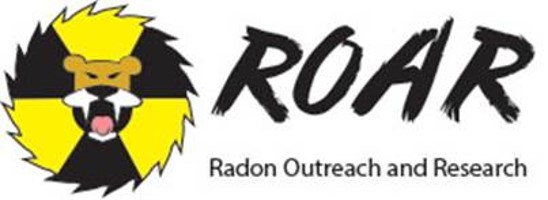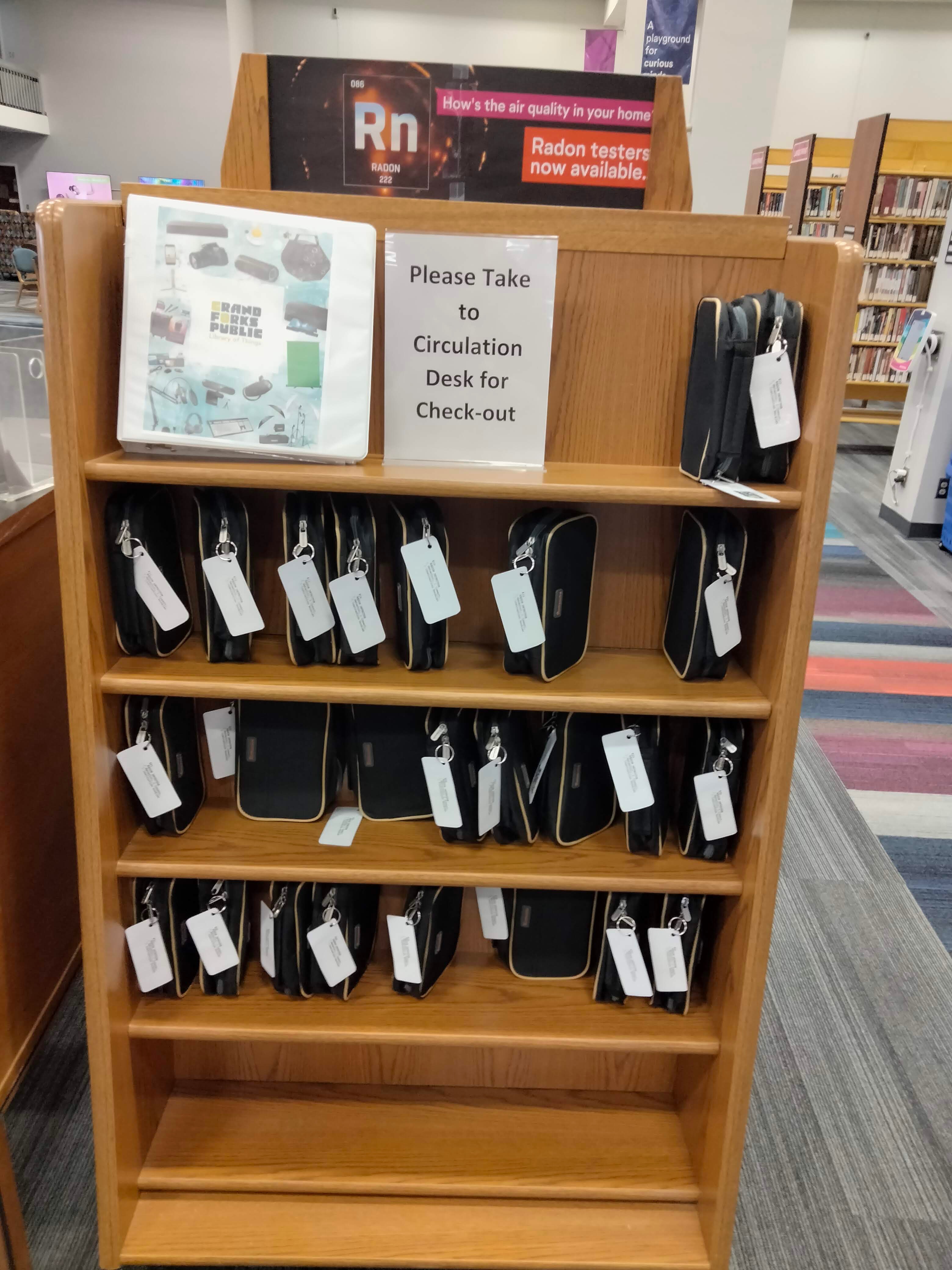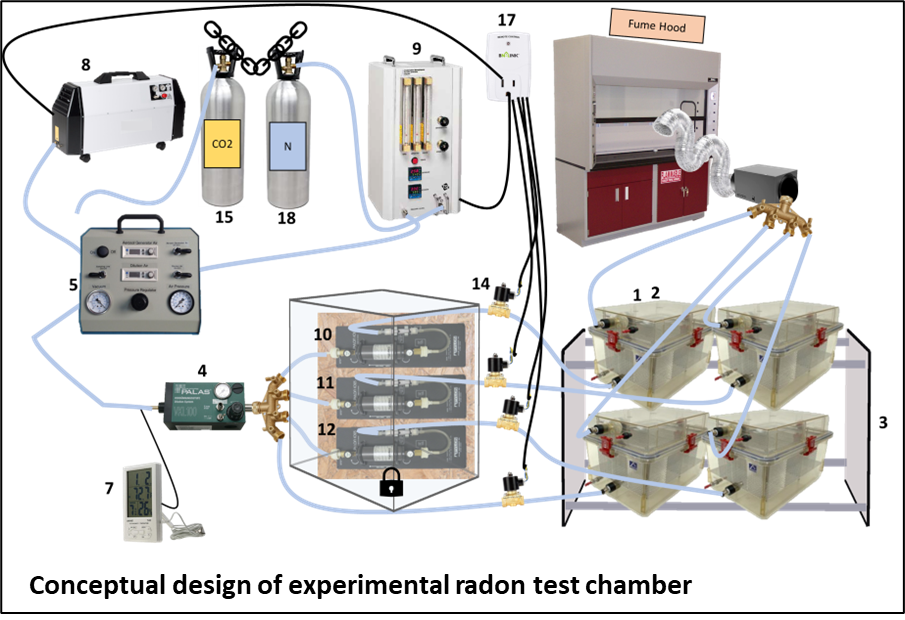Radon Outreach And Research (ROAR)
Welcome to the Radon Outreach And Research (ROAR) Project. Our goal is to improve health through informing the public of radon risks, providing access to radon detection resources, and conducting innovative radon research.

Introduction to Radon
Physical Characteristics
- A naturally occurring-radioactive gas that is colorless, odorless, and tasteless
- Comes from the natural breakdown of uranium and thorium in the ground
- Undergoes radioactive decay and emits ionizing radiation (alpha particles)
Health Risks
- Radon exposure increases the risk of lung cancer
- Second leading cause of lung cancer death
- 4 picocuries per liter (pCi/L) is the action level recommended for home remediation
- 4 pCi/L ~= 200 chest X-rays per year
- Smokers are at even greater risk, with 5-10 times the risk of a non-smoker at a similar radon level
Radon in North Dakota
- Nearly every North Dakota county has an average radon level that exceeds 4 pCi/L
- Latest 10-year average across counties is 7.7 pCi/L, almost twice the remediation threshold level
Public Health Implications
- Radon is a major carcinogen that can be highly prevalent in homes and other buildings
- Preventable through various forms of remediation
- The only way to determine risk is to test your home
Initiatives
Grand Forks Radon Lending Library
- Donation of 40 continuous radon detectors (AirThings) to the Grand Forks Public Library
- Funded by the National Center for Health Housing
- Collaboration between Department of Population Health and Communications
- Available for checkout now

Fargo Radon Lending Library
- Donation of 30 continuous radon detectors (AirThings) to the Fargo Public Library
- Funded by a UND CONNECT grant awarded to Dr. Soojung Kim
Experimental Radon Chamber
- Currently under development
- Designed for animal experiments
- Few other experimental chambers exist worldwide
- More info here

Radon Awareness Clinical Trials
- Radon smartphone app pilot intervention study in college students
- Radon smartphone app versus printed brochure study in adults
Members
Gary Schwartz, PhD, MPH, PhD
Mark Williamson, PhD
Soojung Kim, PhD, MPH
David Schmitz, MD
Marilyn Klug, PhD
Richard Van Eck, PhD
Publications/Research
Schmitz D, Klug MG, Schwartz GG. Short Communication: Radon testing via a state tobacco quitline. Preventative Medicine Reports. 2024 42,102738. doi:10.1016/j.pmedr.2024.102738.
Buchheit SF, Collins JF, Anthony KM, Love S-A M, Steward JD, Gondalia R, Huang DY, Manson JE, Reiner AP, Schwartz GG, Vitolins MZ, Schumann RR, Smith RL, Whitsel EA. Radon Exposure and Incident Stroke Risk in the Women's Health Initiative. Neurology. 2024 Feb; 102(4). doi:10.1212/WNL.0000000000209143
Kim S, Scheffer-Wentz H, Klug MG, Schwartz GG. Comparing Communication Methods to Increase Radon Knowledge and Home Testing: A Randomized Controlled Trial in a High-Radon City. Int J Environ Res Public Health. 2023 April; 20,5634. doi: 10.3390/ijerph20095634.
Kim S, Chiu T, Klug MG, Schmitz D, Schwartz GG. Interventions to promote home radon testing: A randomized clinical trial of a smartphone app vs. printed brochures. Cancer Med. 2023 Jan; 12(2):2027-2032. doi: 10.1002/cam4.4988.
Schwartz GG, Klug MG, Williamson MR, Schwartz HM. Criterion Validity of Radon Test Values Reported by a Commercial Laboratory versus the Environmental Protection Agency. Int J Environ Res Public Health. 2022 Mar 18;19(6):3615. doi: 10.3390/ijerph19063615.
Schmitz D, Klug MG, Schwartz GG. Radon Knowledge and Practices Among Family Physicians in a High Radon State. J Am Board Fam Med. 2021 May-Jun;34(3):602-607. doi: 10.3122/jabfm.2021.03.200553.
Kim S, Brewster MS, Schwartz GG. Communicating radon risk via a smartphone app: a pilot intervention study. BMC Public Health. 2020 Apr 22;20(1):547. doi: 10.1186/s12889-020-08677-7.
Vogeltanz-Holm N, Schwartz GG. Radon and lung cancer: What does the public really know? J Environ Radioact. 2018 Dec;192:26-31. doi: 10.1016/j.jenvrad.2018.05.017.
Oancea SC, Rundquist BC, Simon I, Swartz S, Zheng Y, Zhou X, Sens MA, Schwartz GG. County level incidence rates of chronic lymphocytic leukemia are associated with residential radon levels. Future Oncol. 2017 Sep;13(21):1873-1881. doi: 10.2217/fon-2017-0165.
Schwartz GG, Klug MG. Incidence rates of chronic lymphocytic leukemia in US states are associated with residential radon levels. Future Oncol. 2016 Jan;12(2):165-74. doi: 10.2217/fon.15.275.